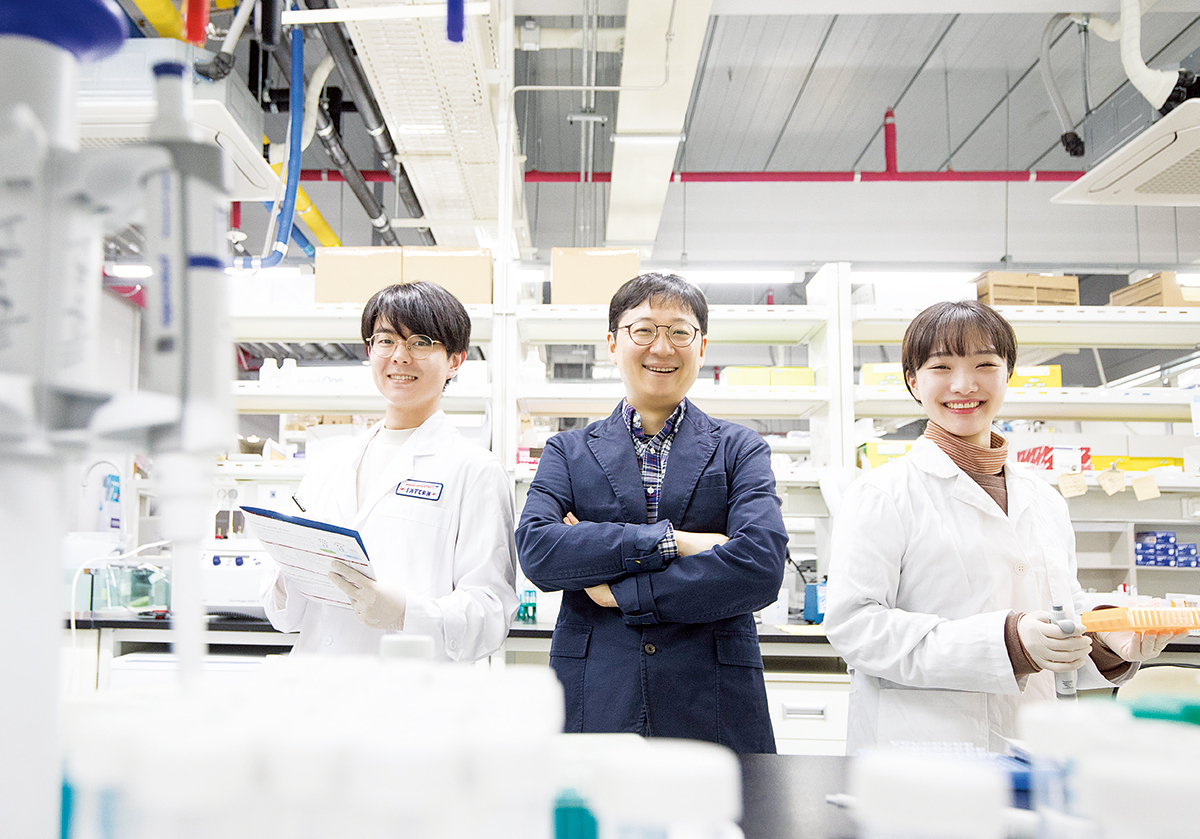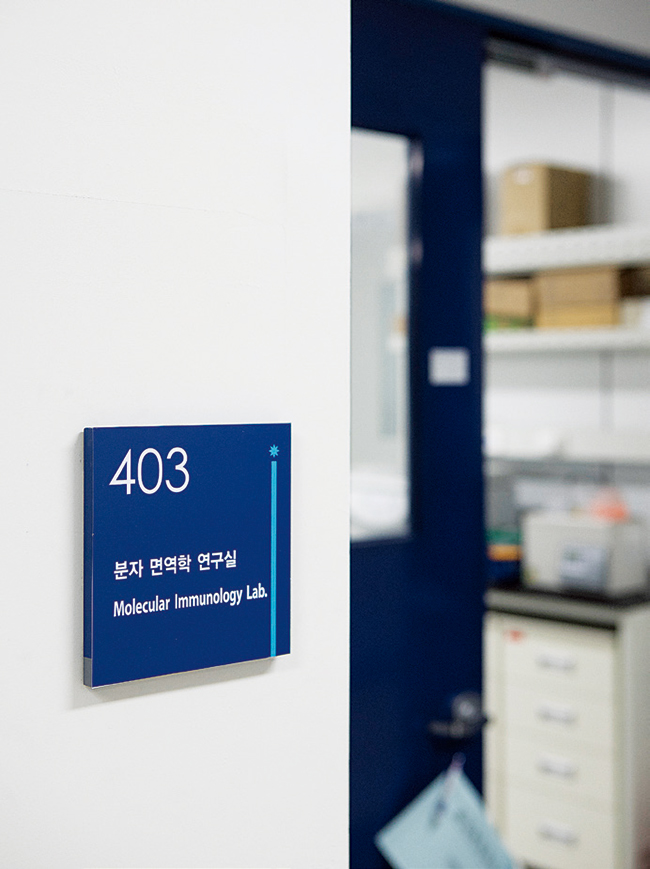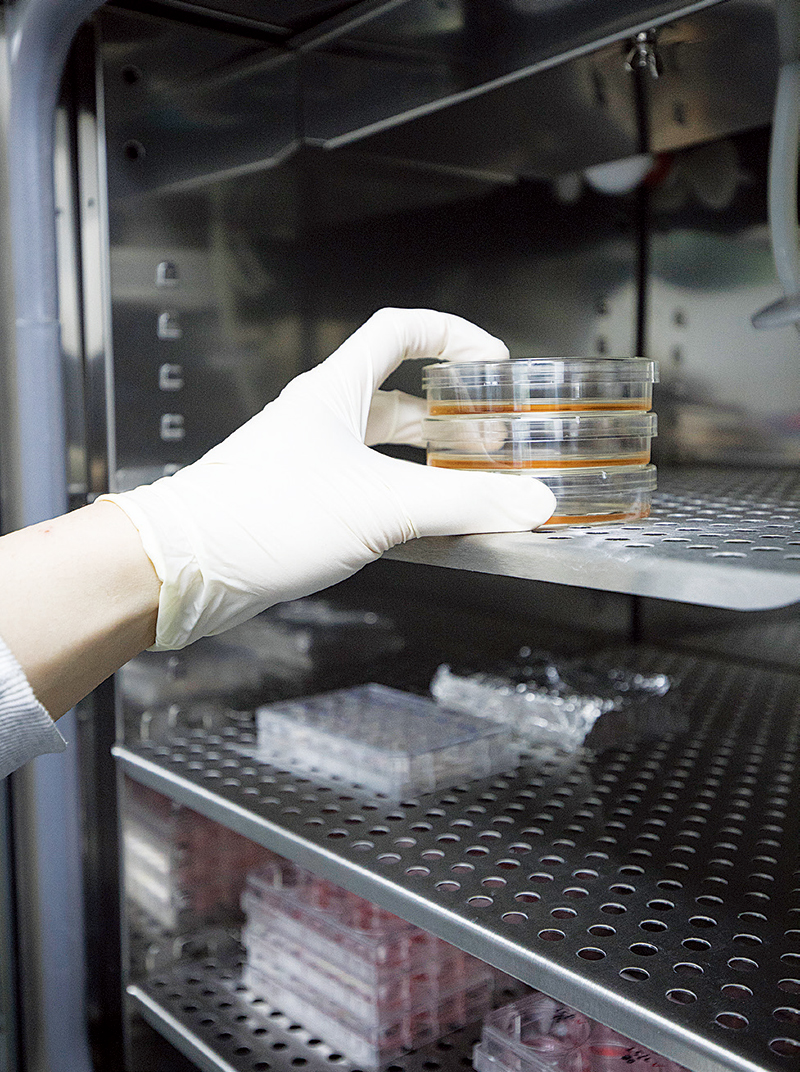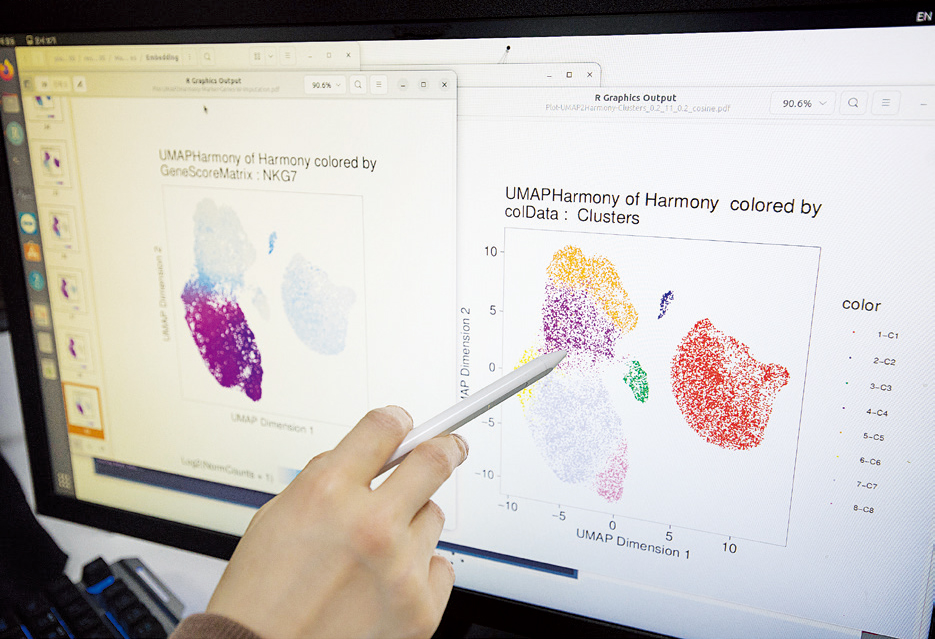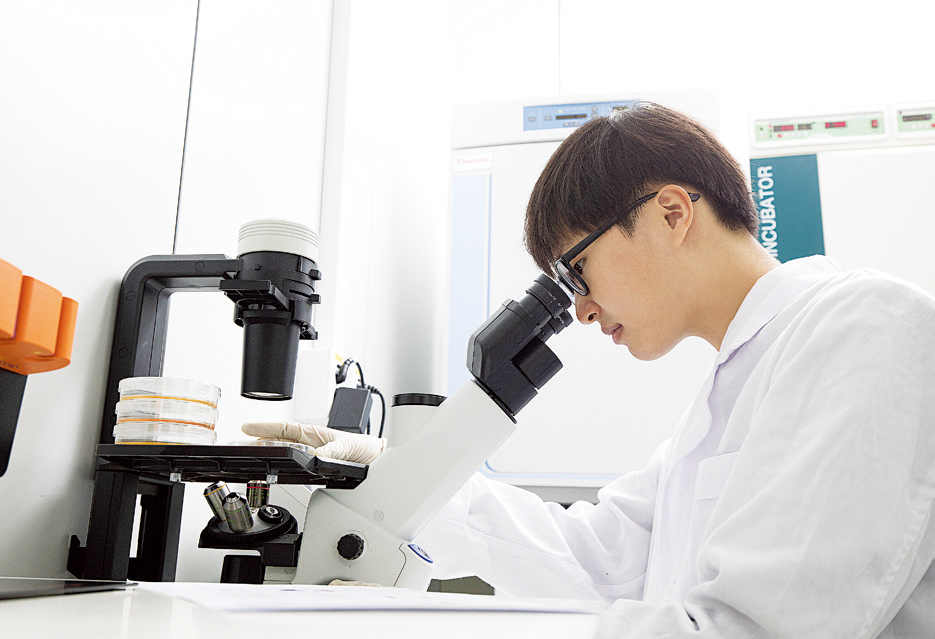
- LABORATORY
- Special Theme _BIOMEDICAL
본문영역
In Search of Targeted Therapy
within Innate Immune Cells
--
Professor Sung-ho Park’s team
at the Department of Life Sciences
The immune system that defends us from foreign invaders can also induce various inflammatory diseases when its function is misregulated. Professor Park Seong-ho's team at the Department of Life Sciences studies innate immune cells and currently researches on the targeted therapy of specific innate immune cells without affecting other cells in rheumatoid arthritis, an inflammatory autoimmune disease.
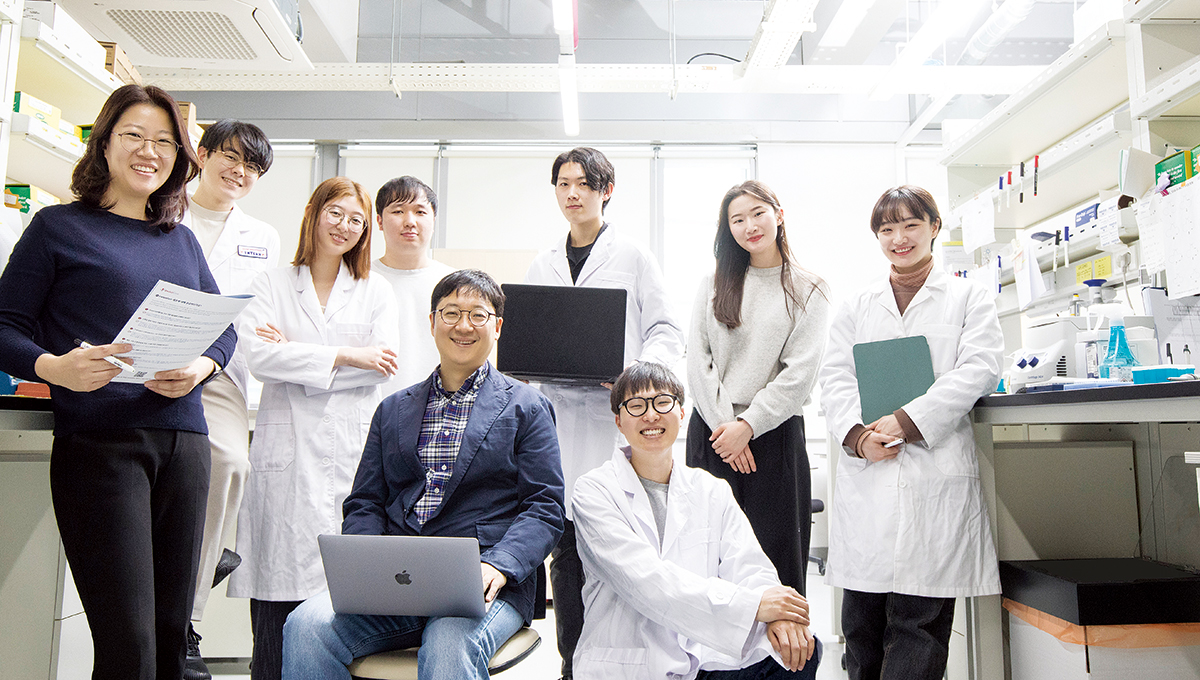
The immune system that protects our body
When foreign pathogens such as bacteria or viruses penetrate our body, the immune system detects and kills them directly or the infected cells. Since this immune system can distinguish between self and non-self, an immune response is induced not against self but against non-self.
The immune system is largely classified into innate immunity and adaptive immunity. Innate immunity is responsible for immediate defense against pathogens, whereas adaptive immunity refers to immunity obtained through memory for specific antigens of pathogens. Autoimmune diseases occur when the immune system fails to differentiate between self and non-self.
“Various autoimmune disorders such as rheumatoid arthritis and lupus occur when the immune system cannot differentiate between self and non-self. With a little exaggeration, most other inflammatory diseases can be said to be related as well to abnormalities of the innate immune system.”
Professor Park's team at the Department of Life Sciences is paying attention to the innate immune system composed of macrophages, monocytes, and dendritic cells. Since innate immune cells that do not function properly are known to be likely to cause various diseases, such as autoimmune disorders, inflammatory diseases, and metabolic diseases, Professor Park's team believes that it is possible to improve the effectiveness of treating various diseases by considering the main functions of these cells.
The team is focusing on ‘macrophages’ among the many innate immune cells. As the original Greek word (meaning "large eaters") suggests, these cells engulf and digest pathogens that have invaded the body, such as bacteria and viruses. Macrophages in all tissues in the human body also produce cytokines that are signaling means to regulate other immune systems.
“Macrophages are also involved in continuous bone decomposition and formation, especially in decomposition. There are specialized macrophages among those in the bone marrow/bone, and they are osteoclasts, also called ‘Bone Eater.’
During macrophage-related research, the research team became interested in osteoclasts whose number and activity increase in diseases such as rheumatoid arthritis and osteoporosis, and began studying ways to regulate osteoclasts specifically without responding to other cells.
A turning point in the treatment of rheumatoid arthritis
The interest of Professor Park in rheumatoid arthritis dates back to his days as an assistant professor in the United States. He worked at an orthopedic specialty hospital called Hospital for Special Surgery and realized through conversation with the doctors in charge that the disease was difficult to treat and that there were few studies on it. The research that began this way is blossoming at UNIST.
“It's not just a story about rheumatoid arthritis. Many diseases have disease-causing cells, and selective treatment of only those cells is still difficult in life sciences. Targeting only the cells we want without a new method is never easy. That is why many researchers, including myself, are searching for ways to remove or control only the desired cells selectively, and our arthritis research is part of the effort.”
Professor Park's team analyzed the mechanism related to the differentiation process of osteoclasts derived from macrophages and discovered a method of targeting only osteoclasts specifically. They identified RANKL-responsive super-enhancers specifically expressed only in osteoclasts. The team confirmed that super-enhancers were formed near the NFATC1 genes, known as an important factor in the formation of osteoclasts, and only in osteoclasts. Moreover, the formation of osteoclasts was observed to have been inhibited when NFATC1 super-enhancer RNA was selectively inhibited. Although non-coding RNA does not encode a protein, it has the characteristics of being a therapeutic target because of the specificity of its molecular sequence.
“RANKL is a leading osteoclast-stimulating substance that binds to the receptor present in the cell membrane of osteoclasts and allows them to resorb bones. Super-enhancers are important in determining cell identity during cell differentiation and are often formed near disease-causing genes. We discovered clues that can target only osteoclast cells for therapy by studying this mechanism.”
The discovery by Professor Park's team is significant as it suggested and proved a new mechanism for targeted therapy of only osteoclasts. So far, the research remains in the animal testing stage, and many steps remain before it can be applied as a precise treatment for rheumatoid arthritis. However, it is clear that the discovery will make great progress in developing treatments.
A desire to contribute to the development of new treatments
Unlike other labs that study immune cells, Professor Park's team members must be proficient in computers. Specifically, they should familiarize themselves with data analysis programs. Although they also use experimental techniques such as traditional animal and cell experiments, they also apply a methodology to analyze large volumes of big data called bioinformatics.
“When you conduct an experiment, its results are data, after all. Determining how to analyze the accumulated data is important for accurately analyzing the principle or process of cellular action and identifying singularities or variations in this process. However, it is difficult to do both well from the start. That is why they say that the entry barrier to our lab is rather high.”
This research on the possibility of targeted treatment for rheumatoid arthritis was also conducted with experiments and big data analysis, and there were many difficulties in coordinating with the researchers. In the end, good research results were obtained, which was a valuable experience for the growth of researchers’ capabilities.
“We conduct extensive joint research because of the experimental characteristics that involve experiments and analysis. In particular, we collaborate with tertiary hospitals such as university hospitals and continue to conduct more specific research on diseases related to innate immune cells. We also try to do more patient-centered basic research.”
Innate immune cells include a wide range of cells, many of which have not yet been identified. Professor Park's team inquires how innate immune cells discriminate self vs.
non-self from a molecular immunology perspective and also considers the function of tissue-resident macrophages present in tissues in various diseases. Based on these basic studies, the goal is to clarify the pathogenesis of diseases and contribute to developing new treatments.
"I am interested in lupus—a chronic autoimmune disease—and cardiovascular diseases that compete for the first and second highest death rates in Korea: arteriosclerosis and stroke, respectively. Even though many patients suffer from these diseases, not many basic researches have been conducted yet. A professor I respect once said, ‘If you do good science, science will take care of you.’ I want to find good science that is essential in the field of basic research and find the answer.”
According to Professor Park, life science is a scientific curiosity and a discipline that raises questions about life, such as who I am, how I move, and why we age and die. Therefore, a life scientist's mission is to ask questions about humanity and strive to find answers constantly. No matter what he studies, he will surely arrive at a good answer if he remembers the fundamentals as a scientist.
